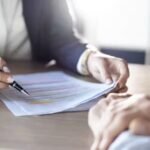Whether you just purchased your first vehicle or are on your umpteenth, there are some state laws all drivers should be familiar with. Your vehicle must have valid license plates on the front and rear. The license plates must also be visible and free from obstructions.
All vehicles hitting Illinois roads must also meet state emission requirements—but how do you know if your vehicle meets these standards or is emitting too much pollution? This is when Illinois vehicle inspection laws come into play.
So, what are these laws, and how can they potentially affect your ability to take your vehicle out on the road?
Does Your Vehicle Need an Emissions Test
A vehicle inspection is another name for the state-required emissions test. If the thought of taking a test sends you into a panic, don’t worry, this isn’t that type of exam. No one is going to ask you a ton of questions and grade your answers. Instead, your vehicle is the one undergoing the testing.
An emissions test is a relatively simple and quick procedure. A certified mechanic or auto technician measures the vehicle’s tailpipe emissions at low and high speeds. Your vehicle stays in the idle position and the technician simply revs your engine. A device catches and measures the amount of carbon monoxide and/or hydrocarbons being emitted from the tailpipe.
Illinois state law typically requires all vehicles manufactured from 1996 to the present to undergo an emission test every other year. So, if you had an emissions test in 2023, you’re probably not due for another one until 2025.
The state also doesn’t require all newly purchased vehicles to have an emissions test automatically. Yes, the test applies to most gas-powered vehicles but you don’t have to start measuring tailpipe emissions until the car is at least four years old.
So, if you’re the proud owner of a 2024 model, you typically aren’t going to need your first emission test until the year 2028.
Some Vehicles May Be Exempt From Emissions Tests
While most vehicles running on gas are required to go through an emissions test once every two years, some automobiles are exempt, and this includes all vehicles manufactured before 1996. If you own an antique car or truck, it doesn’t need an emissions test.
Motorcycles are also exempt, along with all farm equipment. So, if you find yourself driving a tractor down the road, don’t worry about stopping to have the carbon monoxide emissions measured.
Electric vehicles are also exempt for a good reason. Electric vehicles don’t emit potentially harmful pollutants. Diesel-powered vehicles are also exempt. Large vehicles, weighing over 14,000 pounds can also skip emissions testing.
What Happens If Your Vehicle Fails an Emissions Test
Okay, no one wants to fail a test even when it’s your vehicle going through the exam. However, some vehicles don’t pass on the first try—this is actually fairly common, and thankfully, there’s usually a relatively easy solution.
So, what happens if your vehicle receives a failing grade? Don’t worry; your vehicle isn’t going to be impounded and you’re not going to receive a fine, at least not yet. However, you also can’t renew your vehicle registration sticker.
You can receive a non-moving traffic violation ticket if your vehicle has an expired registration sticker. The fine is typically around $90 but you may be able to have it waived if you can show proof of a valid sticker by your court date. This way, you’re only responsible for paying court costs which average around $10 or so.
If your vehicle receives a failed emissions testing score, the next step is to head to a certified auto mechanic. If you aren’t sure where to take your car for repairs, the emissions testing facility can help with some recommendations. Chances are, there’s an issue with the vehicle’s exhaust system, and once repairs are made you shouldn’t have an issue facing the emissions test on your next try.
Some vehicle owners may even receive a rejection notice from the emission testing facility, which isn’t the same as a failed inspection notice. Instead, your vehicle may be exempt from the inspection process. You can also receive a rejection notice if you bring a vehicle in before it’s due for inspection. In other words, you can’t just bring your vehicle in when you feel like it. You need to wait until the state sends you an inspection notice.
You’ll bring the notice to the testing site before the listed date. If you wait to have your vehicle inspected past the date on the notice, you may need to contact the Illinois Department of Motor Vehicles to reschedule your emissions test.
How Much Does an Emission Test Cost
Illinois drivers should be thrilled to learn that the emission test is free, and this only applies to drivers with vehicles registered in Illinois. For example, Wisconsin and Indiana drivers can’t head over to Illinois for a free emission test. The test is only valid for residents of the state.
Why are emissions tests free in Illinois? The simple answer is to encourage vehicle owners to follow the state law. Legislators understand going through an emissions test isn’t always convenient. Not to mention, repairing a faulty exhaust system can be expensive. Offering free testing is a way the state can work to reduce air pollution without placing a financial burden on drivers.
Besides, since the test is free, drivers can’t use the excuse of not being able to afford the inspection as an excuse to get out of going through the process.
Where to Go for a Vehicle Inspection in Illinois
Even though you may have a favorite mechanic, this doesn’t necessarily mean that they’re qualified to perform a vehicle inspection. Only authorized locations can perform state-required emissions testing.
You can always ask your preferred mechanic for a list of locations if they can’t perform one for you. The Illinois Department of Motor Vehicles can also direct you to the closest testing facility. Look for a placard on the auto repair shop’s window indicating they’re authorized to perform the vehicle inspection.










